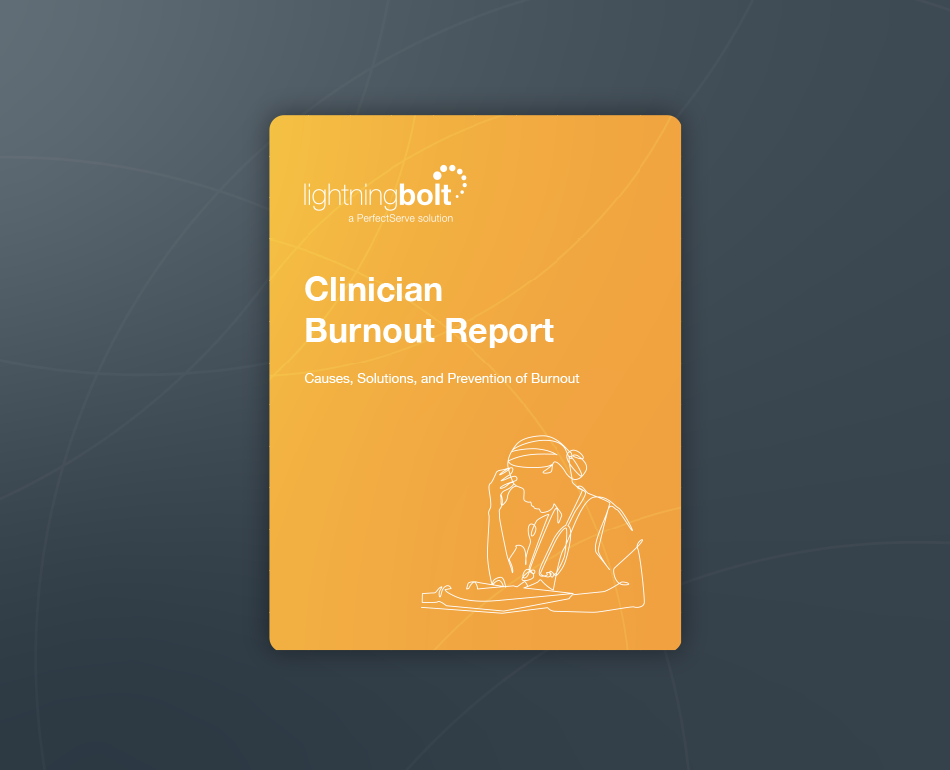How Outdated On-Call Scheduling is Hurting Your Hospital
TABLE OF CONTENTS

Whether your hospital lacks on-call scheduling technology or manages physician schedules manually, poor on-call scheduling wastes the valuable time of your clinical staff. It delays patient care and leads to provider dissatisfaction. Physician on-call schedule management shouldn’t be a manual task.
The connection between call schedules and time to treatment is critical. As patients with emergency medical conditions arrive in the ED or need specialty care, the on-call schedule plays a key role in communicating patient care needs to providers across the organization.
Yet, some hospitals still manage on-call schedules manually, with administrators faxing paper copies of the schedule to departments across the hospital, or manually inputting the schedule to a central location. These manual, inaccurate schedules delay care and frustrate clinical staff.
How are on-call schedules really impacting your hospital?
Poor On-Call Schedule Management Wastes Time
Up to 40% of communication time is spent attempting, but failing, to reach the correct provider or searching for contact information.1
Clinical communication researchers refer to this as “problematic” time—time that nurses spend trying, but ultimately failing, to communicate with the correct provider. Some examples of problematic time include:
- Paging or calling the incorrect physician.
- Searching for information, like the latest schedule, in order to determine which provider should be contacted.
- Looking for updated contact information for a provider.
- Combing through sticky notes and desk calendars to find who is on rotation.
Sound familiar? If so, your communication process might take longer to deliver the result to the lab, specialist, or patient.
An outdated, repetitive process doesn’t just impact nursing staff. Call-center representatives, administrative team members, and physicians need to regularly locate and connect with clinical staff across your hospital. These inefficient workflows cost time and money for the whole organization.
Delayed Communication Leads to Delayed Time to Treatment
80% of serious medical errors are tied to miscommunication.2
Medical scheduling software is at the heart of communication for any healthcare organization, particularly call shift schedules. Time to treatment not only impacts care quality, but also the patient experience. As more patients are looking for care outside of traditional healthcare settings, speeding up patient care is key to minimizing patient leakage.
Communication delivery is only as accurate as the schedules which direct the solution’s routing rules, even for organizations that have a secure messaging platform. Integrating communication platforms with accurate schedules will improve patient and provider satisfaction.
Frustrating Workflows Contribute to Provider Turnover
“In the acute care setting, communication failures lead to increases in patient harm, length of stay, and resource use, as well as more intense caregiver dissatisfaction and more rapid turnover.”1
Communication errors can drive clinical staff morale, satisfaction, and turnover. Clinician turnover can be a huge drain on hospital resources, resulting in lost revenue and increasing labor costs.
- It costs anywhere from $250,000 to $1 million to recruit and replace a single physician.3
- Nurse turnover costs up to $58,000 per nurse.4
So, how do on-call schedules impact provider morale? Here are a couple of ways inaccurate, outdated schedules can foster confusion and frustration:
- Problematic time keeps nurses away from patient care
- Paper calendars and spreadsheets quickly become out of date, making it difficult for physicians to determine when they are on-call
Studies suggest there’s a connection between quality-of-care delivery and provider satisfaction.1 As communication errors negatively impact patient care, provider satisfaction is likely to be impacted as well. Before providers contemplate exiting your healthcare system, give them a better physician scheduling program.
On-Call Scheduling Solutions for Better Management
Implementing a single enterprise-wide on-call scheduling software is the most efficient and cost-effective way to streamline clinical communication for your organization. Not only does it eliminate significant manual work, but it enables better care coordination and drives provider satisfaction.
An enterprise-wide, on-call scheduling platform can streamline hospital communication by enabling:
- Each department to quickly build and manage their on-call schedules. Significant time is wasted in each hospital department building with managing on-call and shift schedules. On-call scheduling software automates the schedule creation process, freeing up time for administrators and even physicians that are often saddled with the task.
- 24/7 real-time access to call schedules from any device. With a single enterprise-wide scheduling software, on-call and shift schedules from every department are available in a centralized location. Schedules become available in real-time on any device. As out of office, vacation time, sick leave, or shift changes occur, hospital staff can be confident they have the correct schedule.
- Full specialty call coverage for your entire hospital. When on-call schedules are manually managed, there’s plenty of room for error. As providers swap shifts and administrators make changes to call schedules, these errors leave gaps in call coverage. An automated system ensures complete specialty call coverage while offering visibility into call schedules across the hospital.
- Faster speed to care—reduce time to contact on-call providers by up to 88%. On-call scheduling software reduces the time to contact on-call providers by as much as 88%. An easy click-to-connect workflow simplifies the process of contacting providers while real-time schedules make it easy to determine who’s on call. The result? Faster patient care.
Interested in Exploring More Benefits of On-Call Provider Scheduling?
Download our infographic “6 Reasons to Implement an Enterprise On-Call Scheduling Platform” for a deep dive into the key reasons every hospital should consider an enterprise-wide physician scheduling solution.
Sources
- Improving Patient Safety Through Provider Communication Strategy Enhancements, Agency for Healthcare Research and Quality (US), Dingley, C. et all., Advances in Patient Safety: New Directions and Alternative Approaches—Vol. 3, Aug. 2008: ncbi.nlm.nih.cov/books/NBK43663
- Joint Commission Center for Transforming Healthcare Releases Targeted Solutions Tool for Hand-Off Communication, Aug. 2012: jointcommission.org
- At Stanford, physician burnout costs at least $7.75 million a year, American Medical Association, Sara Berg, American Medical Association, Nov. 17, 2017: ama-assn.org/practice-management/physician-health-stanford-physician-burnout-costs-least-775-million-year
- The High Cost of Nurse Turnover, The University of New Mexico, Nov. 30, 2016: rnbsnonline.unm.edu/articles/high-cost-of-nurse-turnover.aspx



